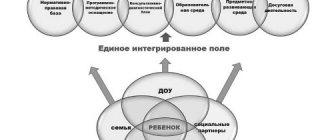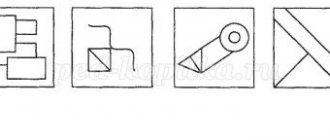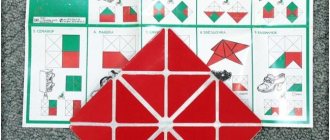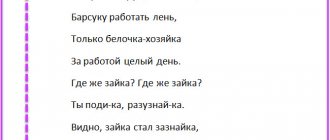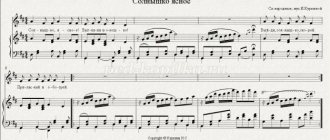Boris Pavlovich and Lena Alekseevna Nikitin are called by many classics of Russian pedagogy. Using the example of their own large family back in Soviet times, they demonstrated how, by breaking established stereotypes in upbringing, they could help a child turn into an independent, harmoniously developed personality.
People first started talking about the Nikitin family in the late 50s of the 20th century. The village of Bolshevo near Moscow, where the teachers lived, was shocked by the way the young couple raised their children. The local community was surprised by the fact that the Nikitin children, who ran barefoot in the snow and were able to perform dizzying gymnastic exercises, were simply bursting with health and amazed with their intelligence. By the age of three or four, these kids had already mastered reading and the basics of mathematics, enthusiastically played logic games invented by their father, and as soon as they started school, they skipped grades.
It was then, in the 1960-1970s, that the Nikitins laid the foundations of Russian parental pedagogy, which are still used today.
Basic principles of education “in Nikitin’s way”
According to the Nikitins, adults traditionally allow two extremes when communicating with a child. The first is being organized. That is, super-caring care and continuous activities, entertainment, games. The child has no time for independent activities.
The second extreme is the abandonment of the child. This means that communication with the baby comes down only to serving him (feeding, drinking, putting him to sleep). This approach leads to deprivation (psychological starvation), hospitalism (delayed emotional and mental development) and, ultimately, mental retardation.
The Nikitin system is based, first of all, on labor, naturalness, closeness to nature and creativity. The guys are masters of themselves, their actions and routine. Parents do not force them to do anything; they only help them understand complex life and philosophical problems. Adults push, rather than get ahead of children, and enter into dialogue with them. The main task of education, according to the Nikitins, is the maximum development of the creative abilities of a growing person and his preparation for life.
The authors define the basic principles of their method as follows.
Firstly, freedom of creativity for children in their classes. No special training, exercises, lessons. Children exercise as much as they want, combining sports with all other activities.
Secondly, light clothing and a sports environment in the house: sports equipment is part of the daily life of children from early childhood, becoming their natural habitat, along with furniture and other household items.
Thirdly, parental concern for what and how the kids are doing, the participation of adults in children's games, competitions, and in general - in the very lives of children.
Parents should have only one goal: not to interfere with the child’s development, but to help him, not to put pressure on children in accordance with some of their own plans, but to create conditions for their further development, focusing on the children’s well-being and desires.
Lena Alekseevna and Boris Pavlovich did not initially set themselves the goal of teaching their kids everything as early as possible. They noticed that children develop earlier those aspects of intelligence for which appropriate “advanced” conditions have been created. Let's say a child has just begun to speak, and among his toys he already has cubes with letters, a cut alphabet, plastic letters and numbers.
Nikitin system for preschoolers
The preschoolers raised by the authors of the system were at a developmental level of at least second grade. By the age of about five, kids were solving mathematical equations and reading, without their parents teaching them much of what the children could do. The younger ones learned some skills from the older ones, and learned some on their own. This is precisely the essence of education according to Nikitin: the child should not be given knowledge, but should be encouraged to obtain it himself .
You can agree with the Nikitins’ method or not, but you cannot ignore the facts: children who are raised according to this method are superior to their peers in everything.
The intellectual development of preschool children is best carried out in a playful way
Nuances of the Nikitin system for preschoolers
- Sport. It is mandatory to have a sports complex in the house with various difficulty levels. Not interfering with activities, but helping with them.
- Early learning. Reading and counting are available to children much earlier than is commonly assumed. It is necessary to have the necessary materials in the house: the alphabet, abacus, geographical maps. All this should be at the child’s disposal at any time.
- Teaching children by children. If there is more than one child in a family (or the methodology is taken as the main one in a preschool educational institution), then the older children teach the younger ones what they themselves already know. As practice shows, they can be even better teachers than adults.
- The time spent attending general school is kept to a minimum. The option of studying externally is practiced.
- Labor training. There is a place in the house where children can make and invent from scrap materials. The tools must be real. Safety precautions are best learned through practice. These conditions are observed from infancy.
- An example set by adults. The task of the parent (educator) in this case is to convey to the child passion for the activity in which he is engaged. The adult acts as a guru and master of his craft.
- Involving the child in the creative process. Anything can serve as a creative activity: any handicraft, drawing, modeling.
- Involvement in housework. A child, even a very small one, has clear responsibilities. They must correspond to gender, age, and physical development. The requirements for the quality of the work done are as high as if it was done by adults. Labor is rewarded.
- Respect for the child and his opinion. It manifests itself not only in words, but also in deeds. The attitude towards the baby should not be as a fool, but as a person, albeit a small one.
- Focus on developing thinking. The child is given problems without an explanation for their solution. He learns not to perform actions according to a given pattern, but to independently obtain knowledge. Figuratively speaking, there is no need to force the child to learn the law of universal attraction, but to give him the opportunity to act as Newton himself and discover it.
- Planning time for work, rest and training. The process of learning new things should be the same norm as eating and resting without a break for holidays and weekends. But time needs to be distributed in such a way that the child does not get tired and does not feel overloaded.
- Brainstorm. Collective problem solving without restrictions or criticism.
- Hardening. As for children, it involves light clothing and playing in the fresh air.
- Mind games. They were developed by Boris Nikitin, have a large number of difficulty levels and contribute to the intellectual development of children, but will also be interesting for many adults.
If the child does not cope with the game task assigned to him right away, then you need to try later, but do not try to prompt and help. This rule applies to all Nikitin games.
Nikitin games and their descriptions - table
| Name of the game | Description |
| Fold the pattern | The essence of this game is to create patterns from 16 identical cubes, each face of which is painted in a different color. Some of the sides are bicolor (diagonally painted in two different colors). There are several difficulty options:
The game develops thinking skills, the ability to analyze and combine. It can be offered to children as young as one year old. |
| Cubes for everyone | This game has 7 figures, each of which consists of several cubes. They are similar to the well-known Tetris, but not on a plane, but in space. “Cubes for Everyone” teaches you to think in three-dimensional images and take into account not just one possible side, but several options when solving a problem. They are suitable for children aged two years and older. |
| Fractions | The game consists of 12 circles, each of which is divided into a different number of equal parts and colored in its own color. They are in a special box. The child's task is to open it, pour out the contents, and then put all the circles first on the surface and then into the box. This game gives a clear understanding of what fractions are, how one whole is divided into several parts. Practice shows that children are able to assimilate such information at the age of 3-4 years, therefore, there is no point in delaying its acquisition until the third grade. |
| Hundreds Table | This is a fairly simple game, but not an easy one. It looks like a table where numbers from 1 to 100 are arranged in columns and rows of 10 each. Each row is marked with a certain number of black dots. The game teaches children to quickly memorize numbers, and then quickly add numbers in different rows, solve problems of varying complexity, and subsequently come up with new ones. |
| Watch | The game looks like a watch made from scrap materials. She teaches kids to determine the correct time, calculate the number of minutes and seconds in different time intervals. |
| Dots | This game was designed as a math test. It consists of 44 squares of four colors:
The game comes with tasks of varying complexity that develop logical thinking and teach the child to count quickly. |
| Unicube | This game consists of 27 cubes, the edges of which are painted in a certain way in different colors. It is very functional, and the tasks offered are divided into many levels of difficulty. The game will be useful for a child because it will teach him to think in several directions at once, develop modeling skills and teach him to cope with difficult tasks. Unicube is recommended for children aged two years and older. |
| Fold a square | This game is essentially puzzle-like. But you need to fold not a picture, but squares that are cut into unequal parts of various shapes and painted in different colors. There are 24 of them in total. This game can be offered to children as young as one year old. The game makes you realize that from parts, sometimes bizarre shapes, you can put together one whole. Teaches you to classify objects by color. |
Educational games developed by the Nikitins - photo gallery
The game gives a visual understanding of what fractions are, how one whole is divided into several parts
“Cubes for Everyone” teaches you to think in three-dimensional images and take into account not just one possible side when solving a problem, but several options at once.
Folding patterns develops thinking skills, the ability to analyze and combine
Dots develop logical thinking and teach children to count quickly
Nikitin's watches teach kids to navigate time
Unicube will teach your child to think in several directions at once, develop modeling skills and teach him to cope with difficult tasks.
“Fold a square” makes you realize that parts, sometimes of a bizarre shape, can be put together into one whole, and teaches you to classify objects by color.
How to make a child want to study?
So, the conditions for development must precede this process. This means they need to be prepared in advance. That is, on the walls of the children's room you need to hang a map of the hemispheres, tables of hundreds and thousands, printed and capital letters, measuring instruments, books. And first impressions can involuntarily arouse a child’s interest in some area of knowledge and even develop certain abilities. Working together or working side by side is an obligatory interest in each other’s work process and its results, and at the same time, it is a reason for conversation and exchange of opinions. Here you should pay attention to one very important point: you should never do for a child what he can handle on his own, and never decide for him what he can decide on his own . In any activity for children, adults should try to encourage creativity without imposing their opinions, and without rushing to be sure to prevent a mistake or immediately point out it. And in case of failure, do not reproach or shame the child. But success must be celebrated and not stingy with praise. The main thing is that adults never remain indifferent to what the children do and how they do it, what they do.
Physical development
Children must be ready to perceive knowledge not only mentally, but also physically. The child’s body is itself an instrument of learning. Not overloaded with unnecessary clothing, not burdened with super-calorie food, it easily and willingly “meets” the demands of mental order. Sports equipment should be part of a child’s life almost from infancy. The Nikitins paid special attention to hardening. And their experience has shown that this is an effective way to protect a child from most colds.
Intellectual games of the Nikitins
Methodology
In addition to the advanced conditions for development discussed above, Nikitin has developed a number of educational games for children of any age.
No specific educational program is imposed on the child. He is immersed in the world of the game, in which he is free to choose his field of activity. No one explains the new rules to the child, he simply gets involved in the game with the help of a fairy tale, imitating his elders, participating in group games. As a rule, the active participation of adults or older siblings is required at first, but then the child can study independently. So naturally, the baby performs a number of tasks that gradually become more complicated. At the same time, you cannot give any hints to the baby. He must be given the opportunity to think for himself. If the child cannot cope with the task, you need to return to easy, already mastered tasks, or temporarily leave this game. If it is noticeable that the baby has reached the ceiling of his capabilities or has lost interest in the game, it is better to postpone it for a while. This technique allows the child to independently seek solutions to problems unknown to him, to create new things, that is, it leads to the development of his creative abilities.
Features of the Nikitin Games
The main difference is the versatility of games and limitless scope for creativity. They can interest and captivate all family members. Games teach children, moving from simple to more difficult tasks, to get joy and satisfaction from mental activity, to think, sometimes torment, but always achieve the goal.
Each game is a set of problems that the child solves with the help of cubes, bricks, squares, and parts of a mechanical designer. Tasks are presented to the child in various forms: in the form of a model, a flat drawing, an isometric drawing, a drawing, written or oral instructions, and thus introduce him to different ways of transmitting information. The tasks are arranged from simple to complex.
There are several levels of difficulty, from accessible to a two- or three-year-old to beyond the capabilities of the average adult, so the games can excite interest for many years. And the gradual increase in the difficulty of tasks allows the child to improve independently, that is, to develop creative abilities.
When using Nikitin’s educational games in classes with a child, you should adhere to certain principles.
- You cannot explain to a child the method and procedure for solving problems, and you cannot suggest it with a word, a gesture, or a look. By implementing the decision practically, the baby learns to take everything necessary from the surrounding reality on his own.
- You cannot demand and ensure that the child solves the problem on the first try. He may not have matured yet, and you need to wait a day, a week, a month or even more.
- The solution to the problem appears before the child in the form of a drawing, pattern or structure made of cubes, bricks, construction kit parts, that is, visible and tangible things. This allows the child to check the accuracy of the task himself.
- Most educational games are not limited to the proposed tasks, but allow children and parents to create new options and even invent new games, that is, engage in creative activities.
So, the main feature of Nikitin’s educational games is that they managed to combine one of the basic principles of learning - from simple to complex - with a very important condition for creative activity - doing everything independently.
The educational games developed by Boris Nikitin are described in his book, which is called “Intellectual Games”. Here are just a few examples of the most popular ones.
Which game according to the Nikitins’ method should be offered to children first?
If educators have several educational, intellectual “Nikitin’s games” at their disposal, then it is advisable to first deal with each of them yourself in order to find out the contents and level of complexity. You can try playing it yourself to evaluate the range of tasks and the time required. Taking into account the age, temperament and character of the child or group of pupils, the easiest game tasks should be introduced first, moving towards more complex ones. For example, if children have become accustomed to the game “Fold the Pattern,” then periodically after a few days the games “Monkeys,” “Montessori Frames,” “Dots,” “Attention,” and others should be introduced.
Educators may be interested in the question: is it possible to keep a group of children occupied by offering them several different games at once using the Nikitins’ method? Boris Nikitin himself claims that this is possible if at least two of the three games have already been mastered and the students are interested. At the same time, it is undesirable to set aside a certain time for gaming activities - 5, 10 minutes, create a time frame and stop. As long as the child is interested and is not reprimanded, let him solve logical problems and complete the task.
Frames and inserts
This game is accessible to the little ones. It consists of 16 frames with inserts in the form of geometric shapes: circle, square, triangle, ellipse (oval), rectangle and so on. A better place to start is by showing the inserts. Take a circle, an oval, a square, an equilateral triangle and, naming them, show them to the baby. In this case, it is better not to hold them in your hands, but to lay them out on a plain surface (not on a colored tablecloth or carpet, but at least on a sheet of paper). Having shown one figure at a time, you can give them to the baby for independent actions - let him look at them and play. It would be appropriate to offer him a box or jar in which he can put all this and then pour it back. Gradually, the little one will get to know all 16 figures in the set. If you start with a small number of figures, you can attract the baby to play starting from 10-12 months. When the child grows up, you can complicate the tasks: trace the outlines of the figures with a pencil, first along the frames, then along the inserts (this is more difficult), make a double outline, shade the resulting image, draw figures on the count (three circles, two squares), create plot drawings ( herringbone of three isosceles triangles).
Examples of games using the Nikitins' method
Game "Fold the pattern"
This game comes with 16 cubes of the same size. The standard is 3 x 3 x 3 cm. In this case, the faces of each cube are painted in 4 colors, and two of the 6 faces (opposite) are painted in different colors diagonally. Thus, only 4 colors are involved.
You can make different patterns from the cubes, choosing colors in any order.
By rearranging the cubes, you can create a large number of options for paintings, patterns, schemes, coming up with names for them.
In this game there are three standard tasks: to create a similar pattern according to a given (drawn) pattern, then to create (sketch) a pattern using the pattern folded with cubes, and the third is to come up with new patterns from 9 or 16 cubes.
Schemes - tasks on ready-made cards for the game can be selected in full size so that they can be covered with cubes.
With toddlers, you can play “Fold the Pattern” by first using 4 cubes, making one-color pictures, then gradually introducing the next cubes, making the pattern more complex. You can offer to create a simple pattern yourself and come up with a name for it.
Pupils of senior preschool age can have exciting competitions in the game “Fold the Pattern”. If you divide them into several teams and distribute a set of cubes, then the children will be happy to wait for a new task from the leader and put together patterns according to the diagram. And the teacher can summarize the results in a table, which team added faster, which was more correct, and which came up with more new patterns.
B.P. Nikitin invites adults to pay attention to one very important point: just as we take out a box of cubes, carefully lay them out or noisily dump them all at once, so children will either carefully collect the cubes after playing or scatter them around the room. Handling objects is stored in children's memory; children tend to imitate adults in everything.
By playing “Fold the Pattern,” kids learn to think independently, control and evaluate themselves, and see their own mistakes.
Game "Frames and inserts Montessori"
The basis of this game is mainly the pedagogical developments of the Italian teacher M. Montessori. B.P. Nikitin only slightly changed the completeness and conditions. Game tasks introduce preschoolers to geometric shapes, prepare children's hands for writing, and develop logical thinking.
The game set consists of square plates - frames measuring 10 x 10 cm and about 2 mm thick. Each frame has a hole in the center into which an insert of the corresponding geometric shape and suitable size is inserted, but differing in color.
Here is a list of figures:
- Circle
- Square
- Equilateral triangle
- Ellipse
- Rectangle
- Rhombus
- Trapezoid
- A quadrilateral with irregular sides and one right angle
- Parallelogram
- Isosceles triangle
- Hexagon
- Five pointed star
- Right isosceles triangle
- Pentagon
- Irregular hexagon
- Scalene triangle.
During the game, the frame with the corresponding insert must be named according to the shape of the figure (rhombus, star, circle, etc.).
The number of frames and game tasks for each game are prepared in accordance with the age and capabilities of the children.
Task options:
- Find inserts and insert into frames
- Trace the outlines of the figures (along the frame, along the insert)
- Color the figures with colored pencils
- Outline the figures with a double outline
- Create an ornament from figurines
- Guess the figure by touch
- Insert the inserts into the frames with the eyes closed
- Arrange frames and figures - inserts according to properties.
Game "Monkeys"
This wonderful game is based on children's ability to imitate. Children often copy the behavior of adults, thereby adopting habits, ways of handling objects, and emotions. Young preschoolers have very developed qualities such as attention, observation of adults, and the ability to imitate. These qualities change with age. The game "Monkeys" allows you to evaluate how attentive a child is, or whether this quality is fading.
The game is designed for children from 2 to 3 years old. Children need to be seated at a table so that they can hide their hands under it. The presenter begins the game with a short introduction - a fairy tale: a little monkey was sitting in the room, she was bored, she saw a boy, first hid from him, and then began to repeat all the movements after him and she really liked it. Now all the children - the monkeys - repeat the movements after the boy - the leader (teacher). For the kids, you need to prepare identical wooden blocks or bricks and distribute 2 pieces to each. You can borrow them from any gaming kit. The presenter raises his hands from behind the table and puts his bricks in a certain composition, places them on the edges, in a tower, in the letter “T”, in any way. Children - monkeys must repeat the composition exactly - exactly - from their blocks. In this case, the leader must perform the movements demonstratively slowly, sometimes a little faster, noisily or quietly, but very emotionally, verbally encouraging the monkeys. Having finished the composition, they begin the next one. Having hidden their hands under the table, then taking out the figures, the monkeys again repeat after the leader and build a new composition.
As a result, children develop attention and learn to repeat the actions of the leader. You can complicate the game by introducing new figures, including different colors.
The list of Nikitin games and puzzles is quite large. All of them are aimed at developing logical thinking, memory, attention, and creative imagination. Children's talents need to be developed from an early age, creating a creative environment and engaging the child with intellectual games. Lena and Boris Nikitin think so. And all teachers agree with them on this.
If you found the information on the site useful, please share it on social networks:
Fold the pattern
This game consists of 16 wooden cubes with an edge measuring 3 cm, where each side has a certain color. The cubes must be placed in a wooden or cardboard box (its presence is required). Nikitin advises starting to play with them at the age of one and a half years. In the beginning (especially with the little ones), you just need to sit down next to your child and look at the cubes together: “Look, how beautiful the cubes are!” So I took 4 cubes: one, two, three, four. Look, this is the blue side, and this is the yellow side. What a beautiful blue runner I made! Let's take the bunny, see how he likes to jump on it? And now the path has become multi-colored: blue, yellow, blue, yellow.” Perhaps the baby is no longer listening and is looking around. This means that the acquaintance with the cubes should have been completed a few minutes earlier. The game should not bore the child. And one more thing: like any other, it is advisable to store it in a place where the baby can see it, but cannot get it out himself. When the baby has a desire to play, he can say or point to the box if he does not yet know how to talk. These cubes promote “the development of spatial imagination, accuracy, attention, graphic abilities, the ability to analyze, synthesize and combine.”
Didactic game “Pick a pattern”
For the lesson, prepare game material:
- take light A4 cardboard and white plastic drink lids;
- Divide the cardboard sheet into squares of equal size;
- there should be one cap for each sector;
- With a black marker, draw a pattern on each square, similar on the corresponding lid (it should not be repeated on other squares and lids);
- Laminate cardboard with transparent adhesive tape to extend its service life.
The players' task is to find a suitable cap for each square. The activity is exciting, preschoolers play willingly, thereby developing memory, concentration and perseverance.
Fold a square
This game originated from a puzzle in which several pieces of various shapes were required to form a square. This was a rather difficult puzzle, so Nikitin decided to do a series of simpler tasks. The result is a game for children aged two years and older. It has three difficulty levels. Each contains 12 multi-colored squares. All 12 squares are located on plywood the size of a landscape sheet and seem to be inserted into windows. For children 2 years old and younger, you need to leave 4 of the simplest squares. Let it be a whole square, a square of two rectangles, of two triangles and - cut into two parts along a broken line. Now you can start playing with your child. The parts need to either be arranged into piles (each with parts of the same color), or shown how two halves make a whole square. Then the child is given the opportunity to act on his own. Gradually, the baby will master this level and move on to a more complex one. According to Nikitin, this game promotes the development of color perception, the assimilation of the relationship between the whole and the part, the formation of logical thinking and the ability to break a complex problem into several simple ones.
How to choose Nikitin cubes
Like any other toy, Nikitin’s educational cubes should be chosen based on the child’s wishes. If he liked the wooden blocks, there is no need to force multi-colored cubes or squares on him. When choosing Nikitin cubes, you should take into account the child’s age and the complexity of the game, as well as the child’s psychological and physiological characteristics.
You need to start simple. Even if the task seems elementary to you, let your child set an example: let him feel the taste of victory, and only then move on to a more complex level using task albums.
The game is easy to find for free. You can buy Nikitin cubes in toy stores or order them in online stores. Another option is to buy it on the official website of the Nikitin family with delivery from Moscow or St. Petersburg by mail. The price of Nikitin cubes varies from 350 rubles to 3500 rubles: the exact cost depends on the manufacturer, materials, and size of the set. On the official website it will be more expensive, but of better quality.
Fractions
The age range for starting this game varies, from 3 to 5 years. It is a set of three plywood pieces the size of a landscape sheet. Each of them has 4 circles. They all have the same size but different colors. The first circle is whole, the second is cut into two equal parts, the third into three, and so on, up to 12 “slices”. At first, only the first plywood with four circles is left for the game. With their help, you can repeat colors, count the inserted pieces, and compare them with each other. With their help, you can repeat the colors, count the inserted pieces, and compare them with each other. In this way, the child becomes familiar with mathematical terminology. You can try making a multi-colored circle. It is very interesting to build a ladder: at the bottom there is a whole circle, then half, then a third. With its help, you can clearly understand why one second is greater than one third.
Unicube
These are universal cubes that introduce the baby to the world of three-dimensional space. The development of spatial thinking will allow the child in the future to master drawing, stereometry, and descriptive geometry. The game teaches clarity, attentiveness, precision, accuracy.
"Unicube" consists of 27 small wooden cubes. The faces of each cube are painted in such a way (three colors in total) that this combination of faces is rare, if not unique. That is why it is so difficult to complete tasks according to the proposed schemes. Nikitin offers 60 tasks for the “unicube”. The author performed the first of them with children aged 1.5-3 years, and the most complex ones are not accessible to all adults.
Their daughter Anna Ermakova spoke about the Nikitins’ method
